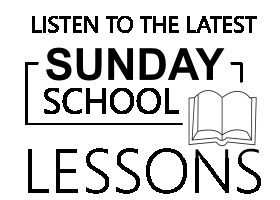 With the Covenant now formed between God and His people, God now begins to formalize how His people will come to Him and how they can be in His presence.
With the Covenant now formed between God and His people, God now begins to formalize how His people will come to Him and how they can be in His presence.
Read Exodus 25:1-9
– What does God ask of His people?
– What stipulation does God put on how they give?
In Exodus 35:5, 21 and 36:5-7, we again find the same emphasize–the gifts were to be brought willingly. And we then read that a problem came up: they willingly gave so much that they had too much, more than they could use, and thus the people had to be told not to bring any more!
– Discuss.
– May the people give whatever they want?
– If not, why do you think God was being so specific?
Precious metals, fabrics, and gem-stones were taken from the spoils of Egypt (Exodus12:35). Skins and hides come from the Israelite flocks that made the trip to Sinai (Exodus 12:38). The purpose of this offering was for a sanctuary where the Lord promised to dwell among his people.
The Ark of the Covenant
Read Exodus 25:10-16
God starts with the vessels and architecture of the tabernacle (and later the Temple). He starts at the center, where His presence will be for His people: The Ark of the Covenant.
The Ark itself was an oblong box of acacia wood overlaid with gold. It measured about 3 ¾ feet in length, 2 ¼ feet wide, and 2 ¼ feet high (2 ½ cubits long, 1 ½ cubits wide, and 1 ½ cubits high). Two gold rings were fastened to the Ark on each side, near the bottom. Poles of acacia wood overlaid with gold were inserted into these rings so that the Ark could be carried. The poles were to remain in the rings, so those who carried the Ark would not touch it.
Read Exodus 25:17-22
The cover of the Ark is called the “atonement cover” or “mercy seat.” The Hebrew word means “to cover.” The translation “atonement cover” is a fitting one, since it was upon this place that the high priest sprinkled the blood of atonement on the great Day of Atonement (Leviticus 16: 11-17). The blood covered the sins of the people and removed them from God’s sight. We’ll get into this a bit later in the lesson.
The cover was made of pure gold, with the figures of two golden cherubim mounted on it. Cherubim are angelic creatures. God placed cherubim at the Garden of Eden to “guard the way to the tree of life” (Genesis 3: 24). Here, the two cherubim faced each other, looking toward the cover, with their wings spread out to overshadow it.
The Ark was where God dwelled with His people
The cherubim being on top of the Ark made sense. For we learn later that the presence of Yahweh overshadowed (episkiazo [Septuagint]) the Ark of the Covenant and the glory of Yahweh filled it (Exodus 40:35). 
Israel called the Ark’s cover “the footstool of Yahweh” (1 Chronicles 28:2) and the winged cherubim at the ends of the mercy seat as the chariot (1 Chronicles 28:18) and throne of Yahweh (1 Samuel 4:4; Isaiah 37:16).
In particular, this was God the Holy Spirit, the Shekinah, the “cloud,” the “glory of the LORD” (Exodus 40:34-35). God dwelled in His Tabernacle/Temple to be with His people (Deuteronomy 31:6; 1 Kings 8:11; 2 Kings 13:23; Haggai 1:13, 2:5).
The Holy Spirit dwelling in the Old-Covenant tabernacle/Temple makes sense. The New Testament tells us that after Pentecost: “Do you not know that your body is a temple of the Holy Spirit who is in you, whom you have from God?” (1 Corinthians 6:19)[1]
The Ark’s Purpose
Earlier in Exodus, we learned that through the blood of sacrifice. God sealed His covenant with the people of Israel. The blood connected the people to their God and God to His people. And stained with the blood of sacrifice, Israel was cleansed to stand before God.
Through shed blood, God continued to remain in communion with His people. In Leviticus 16, Aaron sprinkled the blood of bulls and goats on the mercy seat on top of the Ark of the Covenant. But what’s noteworthy about the Ark of the Covenant is that it had three items inside it. They were God’s Ten Words, or the Ten Commandments (Exodus 25:16), a jar of manna (Exodus 16:33-34), and Aaron’s walking stick, which had earlier budded with leaves (Numbers 17:10).
Manna was the bread-like food God used to feed the Israelites during their 40 years in the wilderness. Manna was also the food the Israelites complained about, showing their sin and lack of gratitude toward God. The budded rod of Aaron was in the Ark because the Israelites rebelled and tried to set up their own priesthood, contrary to God’s command (Numbers 16-17). And of course the Ten Commandments–who can follow those without flaw?
Those three items in the Ark represented Israel’s sins. And how does God deal with sin? He either punishes or forgives. And so to forgive in the Old Covenant, God had the High Priest pour blood on the mercy seat, covering the sins of the people by the blood of a sacrifice. That was the whole point of the mercy seat: it was the place where God brought His forgiveness to His Old-Covenant people.
But for that forgiveness to take place to happen, Jesus had to become human. For the sacrifice of animals did not, in and of themselves, forgive sins. They forgave sins because of Jesus who fulfilled those sacrifices with His sacrifice (Hebrews 10:1-4). Jesus kept the Ten Words that the people could not keep. He supplanted the manna from heaven to become the bread of life. Aaron’s budded staff gave way to the tree of life. But none of that would become reality if Jesus did not take on human flesh in the womb of the Virgin Mary.
The Ark’s Fulfillment in the New Covenant
When the Angel Gabriel told Mary that she was to bear the Messiah, Mary asked how this could be since she was a virgin. Gabriel answered, “The Holy Spirit will come upon you, and the power of the Most High will overshadow you” (Luke 1:35). The Greek word for “overshadow” is episkiazo. That was the same word the Septuagint (Greek Old Testament) used to describe God being present with His people at the Ark of the Covenant. That word usage was not coincidental.
No good Jew, when he heard the words “the power of the Most High will overshadow you,” could fail to think of the divine presence or Shekinah over the Ark of the Covenant. Like God’s dwelling with His people in the Tabernacle/Temple, Mary was overshadowed by the Divine Presence and was filled with the Glory of Israel (Exodus 40:34-5; 1 Kings 8:10-11; Luke 1:35, 2:32). Like the Ark of the Covenant, she became the dwelling place of the Most High.
God used Mary to fulfill the Ark of the Covenant, to be the place where He would bring His presence to the world in the Person of Jesus Christ. Like the Ark in the Old Covenant, the Shekinah “overcame” her and the presence of God was with her.
In John’s Gospel, when writing about Jesus becoming incarnate, John wrote: “And the Word became flesh and dwelt among us” (John 1:14). The word for “dwelt” (eskenosen) is the same word for tabernacle, but in the form of a verb: “Jesus became flesh and tabernacled among us.” John’s use of “tabernacle” as a verb was not coincidental.
In Zechariah 2:10, God spoke, foretelling Jesus’ birth: “Sing and rejoice, O daughter of Zion, for behold I come I am coming to dwell [tabernacle] among you.” God told daughter Zion to rejoice. In Luke 1:28, when the Angel Gabriel first approached Mary, he said, “Rejoice!” (sometimes poorly translated as “greetings”).
We find that same “rejoice” used twice in the Septuagint as an imperative, like in Luke 1:28, to the “Daughter of Zion”: In Zephaniah 3:14 and Zechariah 9:9. As Israel, the “daughter of Zion” rejoiced that the Savior would come to her (Zephaniah 3:14; Zechariah 9:9; Matthew 21:5; and John 12:15), so also Mary did rejoice that the Savior also came her (Luke 1:46-56).
As God dwelt in His Tabernacle, so also would God tabernacle among us in the person of Jesus Christ. As the Ark of the Covenant was the place where God’s Presence became known to His people in the Old Covenant, Mary would become the place where God would make His presence known in the New. The New Testament’s use of “rejoice,” “tabernacle,” and “overshadow” make that clear, which we usually don’t “get” because we often can’t find those links in our translations. Such word usage was meant to convey that Mary had within her womb, and gave birth to, God in the flesh.
[1] Historical Nugget: Today, when Christians think about the Holy Spirit, they know that each Christian has the Holy Spirit indwelling in him. And so we often assume that each believer in the Old Testament did as well. However, no theologian in the Church had such a view until after the Reformation, starting with John Owen (1616-1683, an English Puritan theologian) and Thomas Goodwin (1600-1680, another English Puritan)!
Click here to go to Lesson 21.


